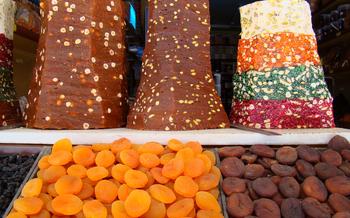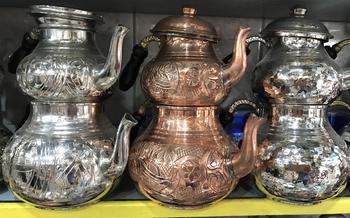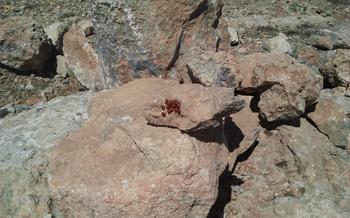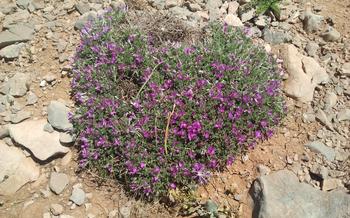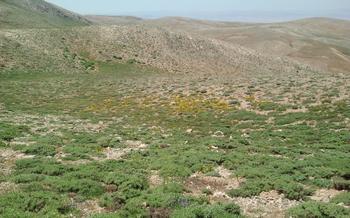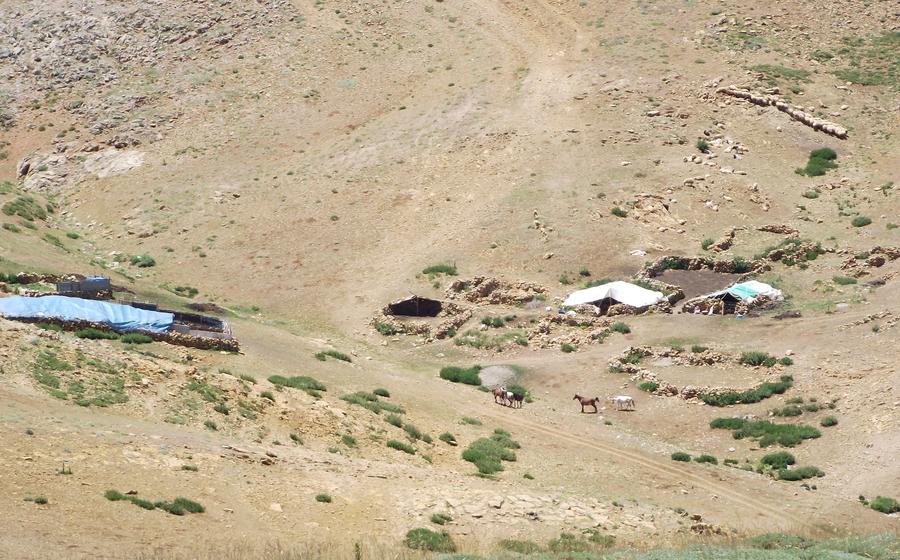
Suçatı Underground City
- The Antiquity of Suçatı Underground City
- Architectural Marvels of Suçatı
- Exploring the City's Depths
- Understanding the Underground Lifestyle
- Historical Significance of Suçatı
- Religious and Cultural Symbolism
- Preservation and Conservation Efforts
- Local Cuisine and Delicacies:
- Unique Souvenirs and Handicrafts:
- Accommodations and Lodging Options
- Transportation and Accessibility
- Planning Your Visit
- Local Customs and Etiquette
- Safety and Security Considerations
- Insider Tip: Unraveling Suçatı's Hidden Gems
The Antiquity of Suçatı Underground City
The Suçatı Underground City, a remarkable testament to ancient human ingenuity, stands as one of Turkey's most captivating historical sites. Its origins are shrouded in mystery, with estimates placing its construction anywhere between the 3rd and 7th centuries AD. While the exact identity of its builders remains a subject of debate, theories abound, suggesting the involvement of various civilizations that once flourished in the region, including the Romans, Byzantines, or even earlier civilizations.
Unraveling the secrets of Suçatı's construction is a challenge, as no written records or inscriptions have been found within its depths. However, the city's intricate design, the sophistication of its engineering, and the sheer scale of its subterranean labyrinth provide tantalizing clues about the advanced civilization that created it. As archaeologists continue to delve into the mysteries of Suçatı, the city's enduring legacy as a symbol of ancient human ingenuity and resilience remains firmly intact.
Architectural Marvels of Suçatı
The Suçatı Underground City showcases a remarkable array of architectural wonders that have stood the test of time. Its intricate network of tunnels, rooms, and chambers is a testament to the engineering prowess of its ancient builders. The city features narrow passageways that wind through the depths, leading to hidden chambers and secret spaces. Ventilation systems were cleverly designed to maintain a comfortable environment within the underground city, ensuring a continuous supply of fresh air. The intricate designs and craftsmanship exhibited throughout the city reflect the meticulous attention to detail and the artistic sensibilities of its creators, making it a true masterpiece of subterranean architecture.
Exploring the City's Depths
Venturing into the Suçatı Underground City is like embarking on a journey through time. Guided tours are available, led by knowledgeable locals who narrate the city's history and secrets. As you descend into the depths, the air becomes cool and damp, and the walls exude an aura of antiquity. The narrow passageways, barely wide enough for one person, create a sense of intimacy as you navigate through the city's hidden chambers.
The intricate network of tunnels and rooms reveals the remarkable engineering skills of the ancient builders. Ventilation systems, water cisterns, and storage areas are carefully designed, demonstrating the inhabitants' foresight and resourcefulness. Explore hidden chambers used for religious ceremonies, communal gatherings, or as shelters during times of conflict. Each discovery adds to the mystique and wonder of this underground labyrinth.
Understanding the Underground Lifestyle
The construction of the Suçatı Underground City was driven by various factors, including the need for protection, shelter, and community. Its inhabitants sought refuge from external threats, such as invasions and natural disasters. The city provided a secure and self-sufficient environment, allowing people to live and thrive underground.
Daily life within the city was characterized by a sense of community and cooperation. The inhabitants worked together to maintain the city's infrastructure, grow food, and provide for their basic needs. They shared resources and responsibilities, creating a tight-knit social structure.
The underground lifestyle also had its unique cultural and social aspects. Religious beliefs and practices played a significant role in the community. The city's design and layout often incorporated religious symbols and motifs, reflecting the inhabitants' deep spiritual connection.
The Suçatı Underground City offers a glimpse into the fascinating world of ancient civilizations and their ingenious adaptation to challenging environments. Exploring its depths provides a profound understanding of the resilience, resourcefulness, and cultural richness of our ancestors.
Historical Significance of Suçatı
The Suçatı Underground City played a pivotal role in ancient trade routes, serving as a strategic location for defense and protection. Its unique features and intricate design made it a valuable asset in the region. The city's location along trade routes allowed merchants and travelers to seek refuge and safety while transporting goods and conducting business. In times of conflict or invasion, the underground city provided a secure haven for the local population, protecting them from enemy forces. Furthermore, the city's connection to other underground cities in the region created a network of subterranean settlements that contributed to the survival and resilience of the ancient communities.
Religious and Cultural Symbolism
Suçatı Underground City is not only a marvel of engineering but also a testament to the religious and cultural beliefs of its ancient inhabitants. Throughout the city, visitors can find various religious symbols and motifs intricately carved into the walls and ceilings. These symbols, often associated with different deities or spiritual concepts, provide a glimpse into the spiritual life of the city's residents.
Furthermore, the integration of cultural elements in the city's design is evident in the use of traditional motifs and patterns. These elements, often inspired by local folklore and mythology, add a unique character to the city, making it a significant site for understanding the cultural heritage of the region.
For the local community, Suçatı Underground City holds deep religious and cultural significance. It is a place where history, tradition, and spirituality intertwine, creating a profound connection between the past and the present.
Preservation and Conservation Efforts
Suçatı Underground City has undergone extensive restoration and maintenance projects to ensure its preservation for future generations. The local authorities and cultural organizations have collaborated to safeguard the city's unique structures and historical significance. These efforts involve:
- Structural Reinforcements:
-
Reinforcing the underground walls, tunnels, and chambers to prevent collapse and maintain structural integrity.
-
Ventilation System Restoration:
-
Restoring the intricate ventilation systems to improve air circulation and provide a healthier environment for visitors.
-
Historical Documentation:
-
Documenting the city's layout, architectural features, and historical significance through detailed research and surveys.
-
Educational Programs:
-
Organizing educational programs and workshops to raise awareness about the importance of preserving cultural heritage and promoting the underground city's history.
-
Tourism Management:
- Implementing sustainable tourism practices to minimize the impact of visitors on the city's fragile ecosystem while ensuring its accessibility.
Local Cuisine and Delicacies:
When visiting Suçatı and Malatya, immersing yourself in the local cuisine is a must. The region boasts a rich culinary heritage, with dishes that tantalize the taste buds and showcase the flavors of Anatolia. From savory kebabs to mouthwatering pastries, there's something to satisfy every palate.
Don't miss the chance to try the famous Malatya kayısısı, a sweet and succulent apricot that's a local specialty. It's often used in desserts, such as apricot jam, pies, and the delectable kayısılı cevizli sucuk, a dried apricot and walnut sausage.
For a taste of traditional Turkish cuisine, try the delicious malatya kebabı, a succulent lamb kebab cooked over an open fire. Accompany it with a side of künefe, a crispy shredded filo pastry filled with melted cheese and drizzled with sweet syrup.
To satisfy your sweet tooth further, indulge in the local höşmerim, a rich and creamy dessert made with shredded wheat, milk, sugar, and cinnamon. Or try the traditional pestil, a sweet confection made from grape molasses and walnuts.
For an authentic culinary experience, head to one of the many local restaurants or keşkek shops in Malatya. These establishments offer a taste of true Turkish hospitality, serving up generous portions of delicious local dishes.
Whether you're a foodie or simply looking to try something new, Malatya's cuisine is sure to leave you with unforgettable culinary memories.
Unique Souvenirs and Handicrafts:
Suçatı and the surrounding area are home to talented artisans who create unique souvenirs and handicrafts inspired by the underground city. Visitors can find a treasure trove of handmade items, from intricate pottery and woven textiles to hand-carved wooden artifacts.
The local artisans draw upon the rich cultural heritage of the region to create their works. Many of the designs incorporate motifs and symbols found within the underground city, making each piece a unique and meaningful keepsake.
One of the most popular souvenirs is the miniature replica of the underground city. These intricate models are meticulously crafted, capturing the essence of the city's architecture and layout. They serve as a tangible reminder of the ingenuity and craftsmanship of the ancient builders.
Visitors can also find a variety of handmade jewelry, such as necklaces, bracelets, and earrings, adorned with semi-precious stones and intricate metalwork. These pieces often feature motifs inspired by the underground city, such as arches, columns, and geometric patterns.
For those looking for a more practical souvenir, there are handwoven carpets, rugs, and textiles. These beautiful creations showcase the traditional weaving techniques of the region and add a touch of warmth and elegance to any home.
To find these unique souvenirs, visitors can explore the local markets and shops in Suçatı and the surrounding towns. There are also several artisan workshops where visitors can watch the artisans at work and purchase their creations directly.
Accommodations and Lodging Options
For a comfortable stay in Malatya, several hotels and guesthouses are situated near the Suçatı Underground City. These accommodations offer a range of amenities and services to cater to the needs of travelers. From budget-friendly options to luxurious stays, there are choices for every traveler's preference.
To immerse yourself in the local culture, consider staying in a traditional guesthouse or a restored Ottoman mansion. These accommodations often provide a unique experience, with authentic décor and warm hospitality. For those seeking modern comforts, there are several contemporary hotels that offer amenities such as fitness centers, swimming pools, and room service.
When choosing your accommodation, consider the proximity to the underground city, as well as your budget and travel style. Advance reservations are recommended, especially during peak tourist seasons.
Here are some tips for finding the perfect place to stay:
- Do your research: Read online reviews and compare prices to find the best deals.
- Consider your budget: Accommodations range from affordable guesthouses to luxury hotels.
- Choose a location that suits your needs: If you want to be close to the underground city, look for hotels in the city center.
- Book in advance: Especially during peak season, it's essential to reserve your accommodation early to avoid disappointment.
Transportation and Accessibility
Reaching Malatya and Suçatı is relatively easy, with various transportation options available. The city of Malatya is well-connected by air, with Malatya Airport (MLX) offering flights to major cities in Turkey and beyond. From the airport, you can take a taxi or rent a car to travel to Suçatı, which is approximately an hour's drive away. Alternatively, you can take a bus from the Malatya bus terminal to Suçatı, which takes about the same amount of time. Once in Suçatı, you can explore the underground city and its surroundings on foot or by bicycle. Guided tours are also available, providing a more in-depth understanding of the city's history and significance.
Planning Your Visit
Best time to visit Suçatı Underground City:
The best time to visit the city is in the shoulder seasons, which are spring (April-May) and autumn (September-October). These periods offer pleasant weather, with warm days and cool nights, making it ideal for exploring the underground city without the discomfort of extreme temperatures. Moreover, during these times, the crowds are fewer, allowing for a more intimate and immersive experience.
Suggested itineraries for different travel styles:
-
For history buffs: Dedicate a full day to exploring the underground city, taking guided tours, and learning about its history, architecture, and significance. Visit the nearby Malatya Museum to delve deeper into the region's rich cultural heritage.
-
For adventure seekers: Combine a visit to the underground city with a hot air balloon ride over the picturesque Cappadocia region. Experience the thrill of floating above the unique rock formations and valleys, offering breathtaking views of the landscape.
-
For families with children: Make the trip fun and educational for kids by incorporating interactive activities. Engage them in treasure hunts or role-playing games within the underground city, bringing its history to life.
Packing essentials and necessary gear:
-
Comfortable shoes: Prepare for a lot of walking on uneven surfaces, so wear sturdy and comfortable shoes with good traction.
-
Layers of clothing: Dress in layers as the temperature can vary significantly between the surface and the underground city.
-
Camera and flashlight: Capture the unique sights of the underground city with a camera. Carry a flashlight or headlamp for navigating dimly lit areas.
Local Customs and Etiquette
When visiting Suçatı, it is important to be respectful of local customs and traditions. Dress modestly and avoid wearing revealing clothing. It is also important to be mindful of your behavior and to avoid any actions that may be considered offensive or disrespectful. When interacting with the local community, be polite and show respect for their culture and way of life. Learning a few basic Turkish phrases can go a long way in showing your appreciation for their hospitality. By following these guidelines, you can ensure that your visit to Suçatı is a positive and enjoyable experience for both you and the local people.
Safety and Security Considerations
Suçatı Underground City is generally considered a safe place to visit, but it's always advisable to take precautions when exploring underground environments. Here are some safety tips to keep in mind:
-
Wear appropriate clothing and footwear: The underground city can be damp and slippery, so wear comfortable shoes with good traction. Avoid wearing loose clothing or jewelry that could get caught on rocks or other obstacles.
-
Bring a flashlight or headlamp: The tunnels and chambers of the underground city are dimly lit, so bring a reliable flashlight or headlamp to navigate safely.
-
Stay with your group: It's best to explore the underground city with a guided tour or with a group of friends or family. This will ensure that you don't get lost or separated.
-
Be aware of your surroundings: Pay attention to the ground conditions, low ceilings, and narrow passageways. Watch for uneven surfaces, loose rocks, and other potential hazards.
-
Don't touch or disturb any artifacts: The underground city is a historical site, so it's important to respect the artifacts and structures. Avoid touching or moving anything unless specifically instructed by your tour guide.
-
In case of an emergency: If you experience any discomfort or feel unwell while exploring the underground city, immediately inform your tour guide or seek medical assistance.
Insider Tip: Unraveling Suçatı's Hidden Gems
Venture beyond the main tourist trails and uncover the hidden treasures of Suçatı. Explore the nearby village of Güzelyurt, renowned for its picturesque landscapes and traditional architecture. Immerse yourself in the vibrant local culture by visiting the weekly market, where you can find an array of fresh produce, handmade crafts, and local delicacies.
For a truly unique experience, embark on a guided hike through the surrounding countryside. Discover ancient ruins, hidden caves, and breathtaking panoramic views. Don't miss the opportunity to witness the mesmerizing sunset over the Taurus Mountains, painting the sky in hues of gold and crimson.
If you're seeking a spiritual connection, make your way to the Eski Cami (Old Mosque), a testament to the region's rich religious heritage. Admire its intricate architecture and immerse yourself in the tranquility of this sacred space.
For a taste of authentic Turkish cuisine, venture off the beaten path and explore the local eateries. Indulge in traditional dishes such as Malatya mantısı (stuffed dumplings), kayısı dolması (stuffed apricots), and cevizli sucuk (walnut sausage). These culinary delights are sure to tantalize your taste buds and leave you craving for more.
Remember, the true essence of Suçatı lies in its hidden gems and the warmth of its people. Embrace the opportunity to connect with the locals, learn about their customs, and create memories that will last a lifetime.
